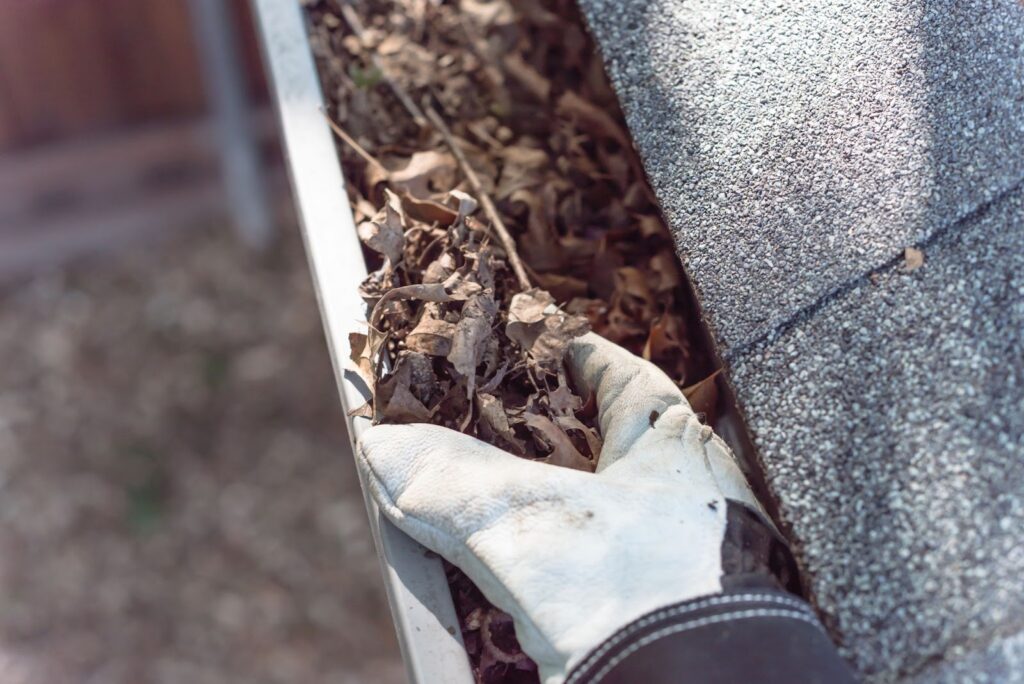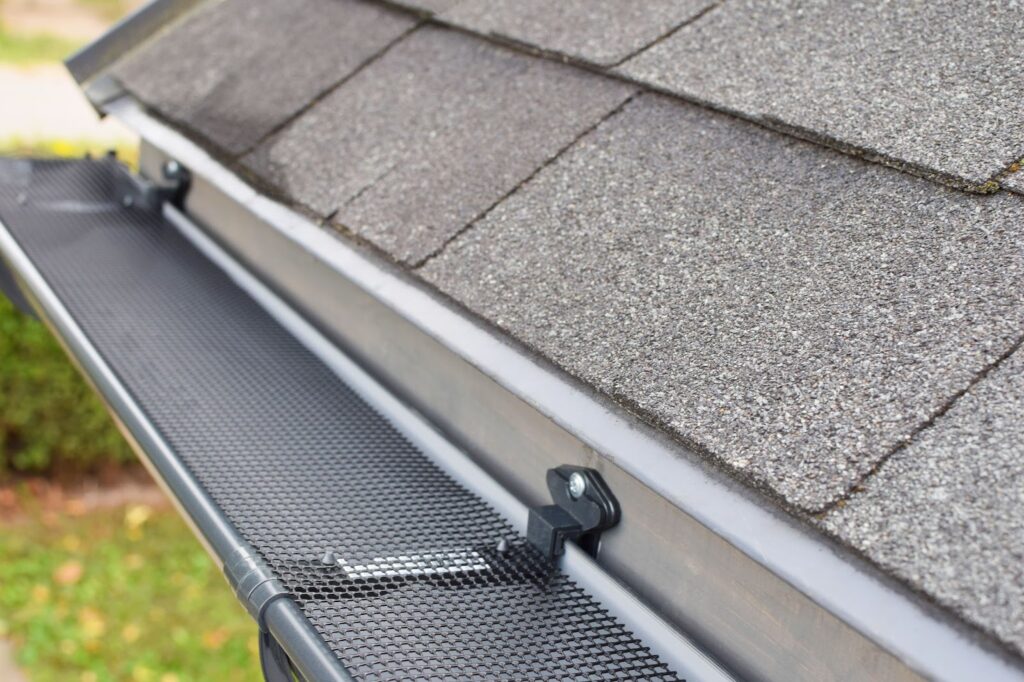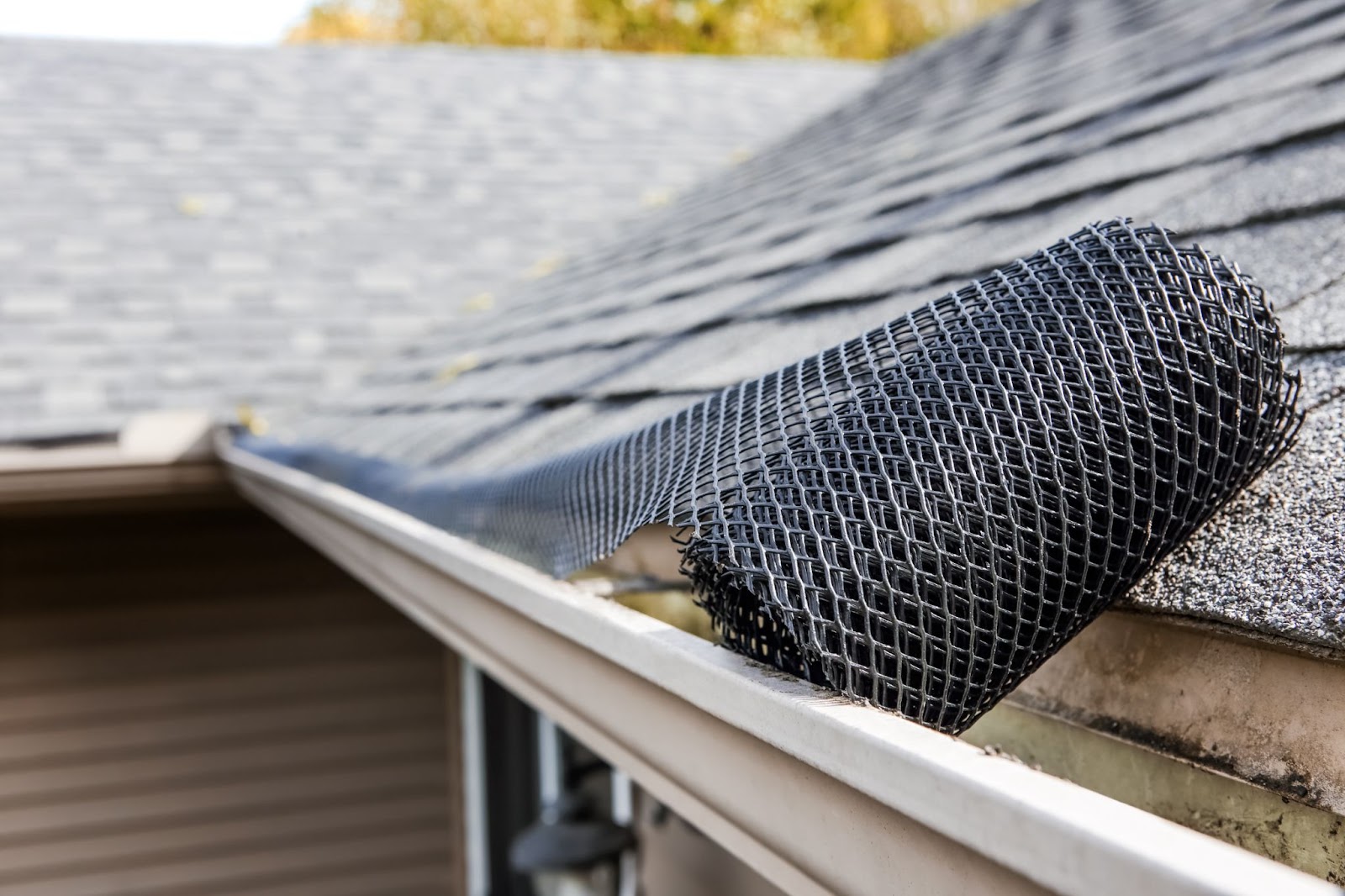If you’ve ever climbed a ladder to tackle scooping soggy leaves during a rain gutter cleaning, you’ve probably wondered if there’s a better way.
The good news?
There is — and it starts when you install gutter guards. These innovative, low-profile additions do the hard work for you, helping keep debris out, water flowing, and your weekends ladder-free.
In this guide, we’ll cover gutter guards, how they work, why mesh gutter guards are a top choice, and how debris guard installation can save you from costly home repairs. If you’re ready to spend less time cleaning and more time enjoying your home, you’re in the right place.
These are for you if you’re tired of dragging out the ladder every season.

What are gutter guards?
Gutter guards are protective covers that sit over your rain gutters. Their purpose is simple: to let water in and keep debris out.
By acting as a filter, they reduce clogs and how often you need to perform rain gutter cleaning.
Several types of gutter guards are on the market, including foam inserts, brush styles, screens, and mesh gutter guards. These styles block everything from leaves and pine needles to roof grit, allowing water to flow freely through your gutters.
One of the most common problems rain gutters face is clogging. That’s why it’s good to install gutter guards on your home.
How do gutter guards work?
Gutter guards work by forming a barrier over your rain gutter system. Rainwater flows through small holes or channels, while leaves and debris stay on top. This setup minimizes blockages and helps water drain properly, even in a heavy storm.
Mesh gutter guards are especially effective because of their fine openings. These allow water to flow into the gutter while filtering out large and small debris. This helps reduce the frequency of rain gutter cleaning, prevents overflow during storms, and keeps your drainage system working properly throughout the year.
While some homeowners consider DIY kits, professional debris guard installation ensures a proper fit and long-lasting performance, especially in areas with heavy rainfall, high winds, surrounding trees, or steep rooflines.
Even with gutter guards, occasional maintenance is helpful. Washing off the tops or brushing away buildup keeps them performing their best year-round.

Types of gutter guards
Gutter guards come in different shapes, sizes, and materials. Choosing the right one depends on your home’s surroundings, roof type, and how much debris your gutters usually collect.
Here’s a quick overview of the most common types:
Mesh gutter guards
Mesh gutter guards are one of the most effective options. They’re made from fine metal or plastic mesh to block large and small debris, including leaves, pine needles, and roof grit. Water flows easily through the mesh, while debris stays out. These guards are known for their durability and low-maintenance performance.
Screen gutter guards
Screen guards are usually metal or plastic sheets with holes punched through them. They’re laid over the top of your gutters, allowing water to pass through while blocking larger debris like leaves and twigs. While easy to install, they may miss finer materials and require more frequent cleaning than mesh guards.
Foam gutter guards
Foam inserts sit inside your gutter and act like a sponge, letting water filter through while blocking debris on top. They’re simple to install but break down over time, especially in harsh weather, and become saturated with dirt and mildew.
Brush gutter guards
These guards look like oversized pipe cleaners. They sit inside the gutter and catch debris in their bristles while allowing water to pass through. While budget-friendly, they often trap debris rather than shed it, requiring more frequent cleaning.
Reverse-curve gutter guards
Also known as surface tension guards, these have a curved design that allows water to flow over the edge and into the gutter, while debris falls to the ground. They’re effective at shedding leaves, but installation is tricky, and they’re more noticeable from the ground.
So, which type is the best?
Each type has pros and cons, but mesh gutter guards and screen guards offer the best balance of effectiveness, durability, and ease of maintenance, especially in areas heavily populated with trees.
No matter which type you choose, professional debris guard installation ensures your system fits snugly and functions properly through all seasons.
Benefits of installing gutter guards
Choosing to install gutter guards benefits your home in many ways:
First, they significantly reduce the chance of clogs. No matter what gutter guard you opt for, it keeps gutters clear. By preventing clogs and ensuring proper water flow, gutter guards help protect your home from flooding, reducing potential damage during heavy rains.
Second, it cuts down how often you need to clean your gutters. With gutter guard installation, the job becomes less messy and much less frequent, saving time and reducing risk from climbing ladders.
Third, gutter guards help protect your home from pests. Birds, insects, and rodents love nesting in clogged gutters, but guards help keep them out.
They also improve water flow during heavy storms, helping your gutter system move water away from your home efficiently. And fewer clogs mean fewer expensive repair calls down the road.

Are gutter guards right for your home?
Wondering if it’s the right time to install gutter guards?
If your home has trees nearby or your gutters clog even once a year, the answer is probably yes. Adding guards saves you the time, effort, and risk that come with frequent rain gutter cleaning.
It’s especially worth considering if you’ve already dealt with water overflow, sagging gutters, or blocked downspouts. These are all signs that your current setup could benefit from a reliable installation.
Plus, standing water from clogged gutters may lead to mold growth; if you encounter mold, follow the CDC’s mold clean-up guidelines.
While no system is completely maintenance-free, installing quality guards — particularly mesh gutter guards — dramatically reduces the frequency you’ll need to clean or repair your gutters.
Why professional installation matters
While it’s possible to install gutter guards yourself, many homeowners choose to have them installed professionally, and for good reason.
Proper installation ensures the guards fit your gutter system, roof slope, and drainage needs. It also prevents gaps or sagging, which reduces the effectiveness of the guard system and even causes damage over time.
Take the guesswork out of the process. Hire an expert team that knows Utah’s unique weather and roofing styles. Whether you’re dealing with seasonal leaf drop or year-round pine needles, they will recommend the right system and install it correctly.
Upgrade your rain gutters with Wasatch Rain Gutters
If you’re ready to make gutter cleaning easier and protect your home from water damage, then it’s time to install gutter guards. At Wasatch Rain Gutters, we specialize in custom solutions that fit your roof, home, and local climate.
Our experienced team offers expert advice, reliable service, and custom-fit systems that keep your gutters clear and your home protected. From initial consultation to complete debris guard installation, we’re here to help every step of the way. We know what works best for Utah homes, and we’ll help you find a long-term solution that keeps your gutters flowing freely.Skip the clogs, avoid unnecessary repairs, and enjoy the peace of mind with a professional install. Contact Wasatch Rain Gutters today for an estimate and take the first step toward worry-free gutter maintenance.

